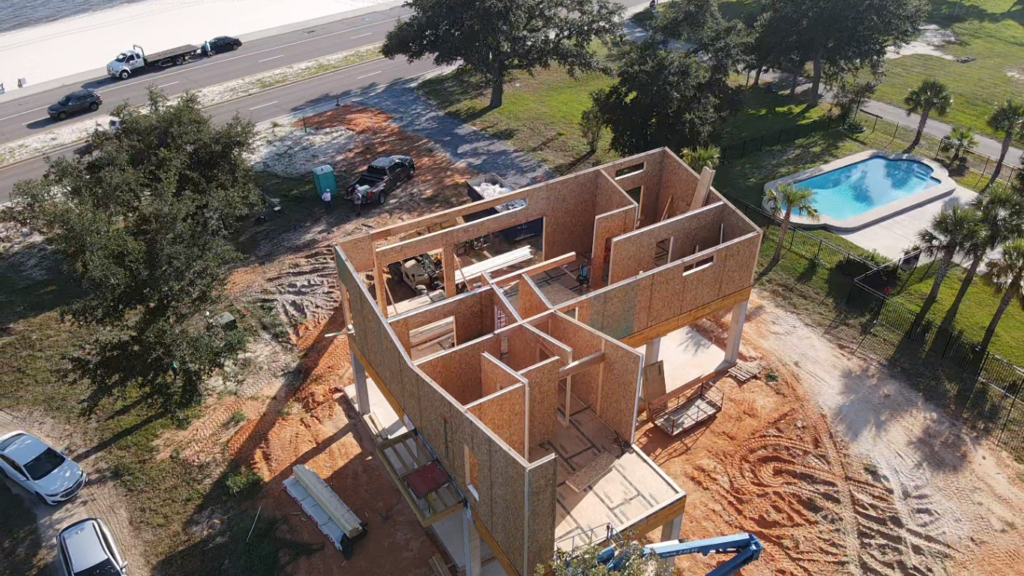Introduction
In an era of climate change, natural disasters have become more frequent, more intense, and more devastating. Wildfires, hurricanes, floods, and earthquakes are no longer rare occurrences—they’re part of a new global norm. For homeowners and developers alike, resilience has become a core requirement in construction.
Nano Living Systems LLC (NLS) is responding to this reality with Structural Insulated Panels (SIPs)—a high-performance building system designed not just for efficiency, but for survival.
Why Resilience Matters
A home is more than a place to live—it’s protection. Traditional building methods often fail in the face of extreme weather, leading to:
- Costly repairs or total rebuilds
- Insurance hikes or disqualification
- Loss of life or property
- Displacement and trauma
Disaster-resilient design isn’t a luxury. It’s a necessity—especially in high-risk zones. Nano Living Systems builds homes that stand strong, recover fast, and endure long after others fail.
The SIP Advantage in Disaster-Resistant Construction
1. Strength and Structural Integrity
- High Load-Bearing Capacity: SIPs use solid foam cores bonded to durable facings, creating a monolithic structure far stronger than traditional framing.
- Wind Resistance: NLS SIP homes withstand wind loads up to 200 mph—equivalent to a Category 5 hurricane.
- Impact Resistance: The rigidity and density of SIPs protect against debris strikes from storms and tornadoes.
2. Fire Resistance
- NLS SIPs are built with cement fiberboard and steel—non-combustible materials that resist ignition.
- These panels outperform wood-frame structures in fire spread prevention, buying precious time for evacuation and fire response.
📍 Nano Case Insight:
In 2023, one NLS SIP home in California withstood a wildfire that consumed surrounding wooden homes. The SIP envelope remained intact, and the interior experienced only smoke damage.
3. Earthquake Resilience
- SIPs are lighter than concrete and stronger than wood, making them ideal for seismic zones.
- The rigid, continuous panel connections distribute stress evenly during ground motion—reducing risk of collapse.
- Nano integrates flexible base systems and anchoring hardware tailored to seismic loads.
4. Flood and Moisture Resistance
- SIP panels are sealed, closed-cell, and moisture-resistant, preventing mold and decay.
- The raised floor systems used in flood-prone areas elevate homes above base flood elevation (BFE).
- All finishes and materials used by NLS in these areas are waterproof and quick-dry, ensuring minimal downtime after an event.
Built-In Safety Features with Nano Living Systems
| Feature | Disaster Benefit |
| SIP Construction | Wind, fire, seismic resistance |
| Cement Fiberboard Exterior | Non-combustible, rot-proof |
| Reinforced Roof Panels | Debris impact resistance |
| Triple-Sealed Openings | Prevents water and wind intrusion |
| Smart Monitoring Systems | Alerts residents to structural stress |
| Total Timeline | 16–22 weeks |
Resilience Without Compromise
Disaster-resilient homes often conjure images of bunkers or uninspired boxes. Not with Nano.
- Design Aesthetics: SIPs offer open-plan flexibility without compromising structural integrity.
- Sustainable Systems: Resilient doesn’t mean resource-intensive. Nano homes use 40% less energy on average.
- Smart Adaptation: Homes can be fitted with off-grid energy, rainwater collection, and satellite connectivity to ensure functionality during outages.
Case Study: Coastal Hurricane Zone Rebuild
After a Category 4 hurricane devastated a Gulf Coast community in 2022, Nano Living Systems was contracted to build a 20-unit affordable housing cluster:
- Rebuilt in 4.5 months
- SIPs used throughout to resist future storm damage
- Units passed FEMA’s highest resilience standards
- Survived another tropical storm within 90 days of completion—with zero structural damage
Disaster Relief and Humanitarian Use
Nano’s SIP technology is also used in:
- Post-disaster shelters
- Rapid-deploy emergency housing
- Remote area relief missions
Because of their modular design, these units can be:
- Flat-packed for air or sea transport
- Erected in under 48 hours
- Equipped with solar and sanitation add-ons
Insurability and Long-Term Value
Insurers increasingly reward resilience with:
- Lower premiums
- Faster claim processing
- Higher eligibility for mortgage products
Homebuyers benefit from better financing, resale value, and peace of mind.
Conclusion
A disaster-resilient home is one that protects, endures, and bounces back. With SIPs, Nano Living Systems delivers not only strength but smart design—homes that shield residents from today’s risks and tomorrow’s uncertainties.
Whether you’re building in a hurricane corridor, fire-prone valley, or seismic hotspot, Nano Living Systems offers the ultimate fusion of durability, safety, and sustainability.

